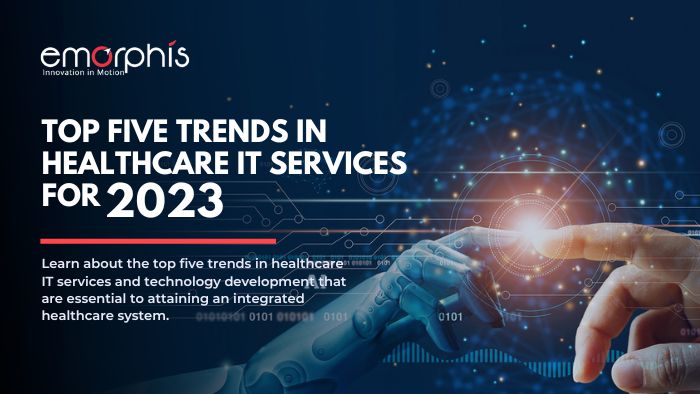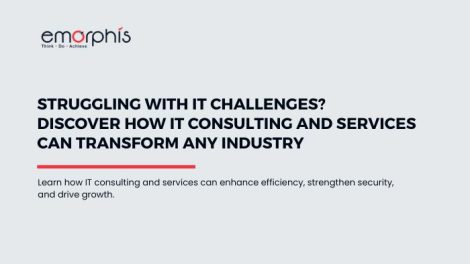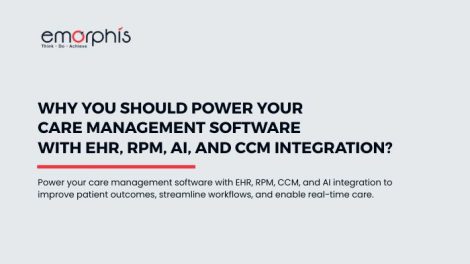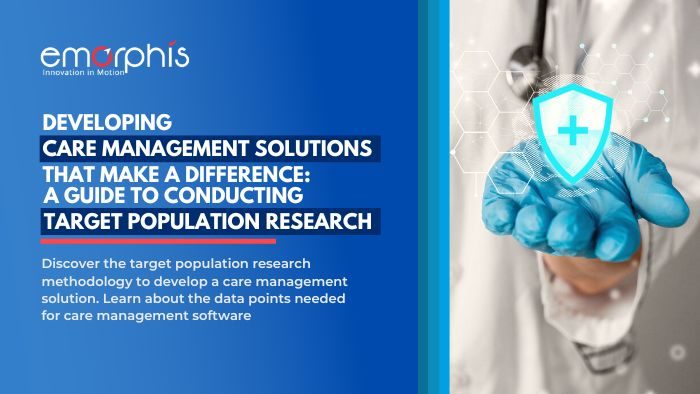Overview
Since the era of Covid-19, the healthcare sector has seen significant advances shaping the world of medicines. IT-integrated and AI-powered solutions automate tasks and streamline the process. This helps in reducing burnout for doctors, nurses, and other staff. Healthcare IT services have been in trend for a long but did see a rise in the Covid era. Further, in this blog, you can check the certain focus areas which will see significant advancements in the coming years.
What’s coming to the market in the integrated healthcare system?
Though some technological advancements are already here. Although, some of the critical areas that would be transforming in 2023 include:
Major Focus Areas in Healthcare IT services
- Telemedicine app development and remote patient monitoring software development. These healthcare solutions enable providers to deliver care remotely.
- Artificial intelligence (AI in healthcare) and machine learning, for improving diagnostic accuracy and treatment planning.
- Electronic health records and personal health records are in focus. Today EHR and EMR integration services are being used to improve the accessibility and sharing of patient information.
- Wearable technology, to monitor vital signs and collect data on activity levels and sleep patterns.
- Blockchain technology is under exploration for its potential to secure and share patient data, as well as its potential to enable new business models in healthcare.
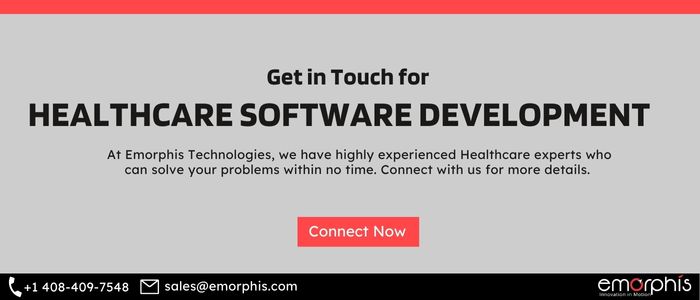
Here's a closer look at what we can expect to change the most in the coming months of this year.
1. Patient Engagement
With the rapid advancements in digital technology, patients have access to a wide range of tools and platforms. This will also further empower them to take control of their health and wellness with healthcare IT.
One of the most significant ways technologies will affect patient engagement is through telemedicine. These apps allow patients to consult with their doctors remotely. Either through video conferencing or any other digital medium like chat. It helps to make healthcare more accessible for people living in remote areas. Also, those with mobility challenges. Telemedicine app development solutions also make it easier for patients to schedule appointments. Telemedicine can be used in various areas of healthcare. As in primary care, mental health, chronic disease management, and follow-up care for patients after a hospital stay. With the advent of telemedicine, patients can now access healthcare services remotely and receive timely and appropriate care, regardless of location.
Factors and Features of Telemedicine Helping Patient Engagement
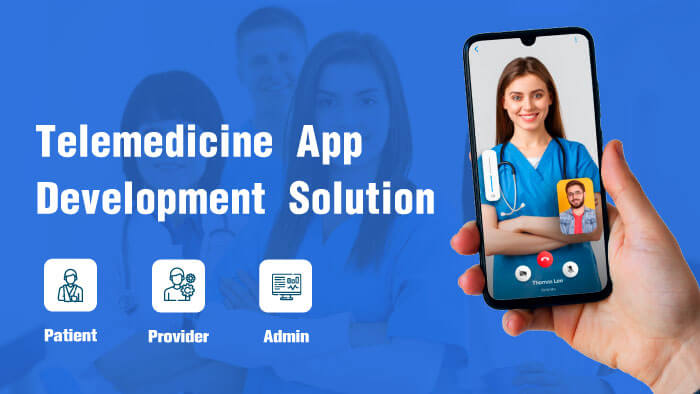
- Increased access to healthcare: Telemedicine allows patients in remote or underserved areas to access healthcare services that may not be available locally.
- Convenience: Patients can receive medical care from the comfort of their own homes. Thus reducing the need for transportation and time off work.
- Cost savings: Telemedicine can help to reduce healthcare costs by reducing the need for in-person visits and travel.
- Improved continuity of care: Telemedicine allows healthcare providers to monitor patients remotely, providing more frequent check-ins and follow-up care.
- Increased patient engagement: Telemedicine allows patients to be more involved in their care through remote monitoring and virtual consultations.
- Increased collaboration: Telemedicine allows healthcare providers to collaborate remotely and share patient data, which can help to improve diagnosis and treatment.
More Healthcare IT services help Patient Engagement
Another way that Healthcare IT services enhance patient engagement is through the use of mobile health (mHealth) apps. These apps provide patients with a wide range of tools. As a matter of fact, to help manage their health, including symptom trackers, medication reminders, and appointment schedulers. They also provide patients with access to educational resources and support groups. Which further helps them better understand their condition and how to manage it.
Artificial intelligence (AI) holds yet another key role in enhancing patient engagement in healthcare. AI-powered chatbots and virtual assistants can answer patients' questions and also guide them in managing their health. Additionally, AI-powered systems can analyze data from electronic health records and wearable devices. This will also further provide patients with personalized health recommendations.
Contact us for consulting on patient engagement solutions
Let us look at some AI-powered tools in healthcare:
Types of AI Tools in Healthcare Helping Patient Engagement
- Machine learning algorithms: These are used to analyze medical data, such as electronic health records, to identify patterns and make predictions about patient outcomes.
- Natural Language Processing (NLP): This type of AI technology analyses unstructured data, such as patient notes and medical literature, to extract relevant information and improve decision-making.
- Computer vision: This type of AI technology analyses medical images, such as X-rays and CT scans, to detect signs of disease and assist with diagnosis.
- Decision support systems: The AI algorithms provide real-time recommendations to healthcare providers, such as identifying potential complications or suggesting alternative treatment options.
- Robotic process automation: This AI technology tool automates repetitive tasks, such as data entry and scheduling, to improve the efficiency of healthcare operations.
- Virtual health assistants: These are AI-powered chatbots and virtual assistants that can help patients with self-care and support, such as answering common medical questions and scheduling appointments.
- Predictive modeling: These use AI algorithms to predict future health outcomes, such as the likelihood of a patient developing a specific condition or the effectiveness of a particular treatment.
- Medical imaging and analysis: AI-based algorithms can be used to analyze medical images such as X-ray, CT, MRI, etc., detect abnormalities, identify patterns, and assist with diagnosis.
- Drug discovery and development: Analysing a large amount of data and identifying new drug candidates, predicting drug efficacy, and optimizing drug design is yet another AI algorithm feature.
- Personalized medicine: Another important feature of the AI algorithm is the analysis of patient data and providing personalized treatment recommendations based on a patient's unique characteristics and medical history.
Explore with us how we can help in healthcare software development.
2. Cybersecurity
As Healthcare IT services continue to advance rapidly. The healthcare industry is seeing a significant shift in how patient care is delivered and managed. With the rise of electronic health records (EHRs) and telemedicine. With healthcare integration services, healthcare providers can share patient information and communicate more efficiently than ever before. However, as we move into the future. The increasing use of technology in healthcare also raises concerns about cybersecurity and protecting sensitive patient information.
According to the US Federal Bureau of Investigation, the number of weekly attacks on healthcare organizations has risen to an average of 626 per organization. Furthermore, in 2021 alone, over 40 million patients' healthcare records were compromised. This highlights a growing concern for the security of internet-connected hospital devices. It is estimated that half of them are vulnerable to cyberattacks.
In 2023, we expect to see even more healthcare providers using technology. This is to improve patient care and streamline operations. It includes using artificial intelligence (AI) and machine learning to analyze patient data. As well as wearable devices to track patient vital signs and monitor chronic conditions. While these advancements can potentially improve patient outcomes. Also, it reduces costs considerably, and it does trigger to implementation of updated cybersecurity measures.
Use Cases Where Cybersecurity is Needed
One primary concern is the increasing number of connected medical devices and systems used in healthcare environments. These devices also include implantable medical devices and medical imaging equipment. They often have little or no built-in cybersecurity measures, making them vulnerable to cyberattacks. Additionally, these devices are used to collect and transmit sensitive patient information. A breach could expose sensitive patient data.
Click the link to read for more details on Healthcare Cybersecurity
Another concern is the growing use of telemedicine. Which allows patients to receive medical care remotely via video conferencing and other digital technologies. While telemedicine can be a great way to improve access to care. It also presents new cybersecurity risks. For example, a hacker could intercept a telemedicine session and pass sensitive patient information. Additionally, as more patients use their own devices to access telemedicine services, there is a greater risk of malware and other cyber threats.
To combat these cybersecurity risks, healthcare providers must take a proactive approach to cybersecurity. This includes implementing robust security measures. It includes encryption and multi-factor authentication, to protect patient data. Additionally, healthcare providers must ensure that all medical devices and systems have secure links. And also have measures of security audit and upgradation to protect against known vulnerabilities.
3. Robotics Process Automation
Robotics Process Automation (RPA) is a technology that uses software robots to automate repetitive and mundane tasks. It helps free up human workers to focus on more critical and complex responsibilities.
The healthcare industry faces several challenges, including an aging population, and a shortage of skilled workers. Also increasing demand for high-quality and cost-effective care. According to the World Health Organization (WHO), global healthcare workers might drop to 12.9 million professionals by 2035. RPA can help address these challenges by streamlining processes, reducing errors, and improving efficiency.
One of the most significant ways RPA can be used in healthcare is to automate administrative tasks such as data entry. Also scheduling, and insurance claims processing. These tasks are often time-consuming and prone to errors. But RPA can handle them quickly and accurately, freeing healthcare workers to focus on direct patient care.
Another area where RPA can have a huge impact is in the management of electronic health records (EHRs). EHR integration is becoming increasingly important for healthcare organizations. However, operating the same can also be complex and time-consuming. RPA development for healthcare can automate many of the tasks associated with EHRs. These can be such as data entry, data validation, and reporting. This will make it easier for healthcare workers to access and use the information they need to provide the best care possible.
Contact us for consulting on the use case of robotic process automation solutions.
4. Remote Patient Monitoring
One of the most significant advantages of remote patient monitoring software development is that it can significantly increase the efficiency of care delivery. Remote systems allow healthcare providers to monitor patients in real time. It is without relying on manual monitoring methods. Healthcare providers can spend more time on other essential tasks. Such as diagnosing and treating patients. It can also help to reduce healthcare costs. Healthcare providers can save time and money by automating many of the tasks associated with patient monitoring. Additionally, remote systems can help to reduce the risk of human error, which can lead to costly medical mistakes.
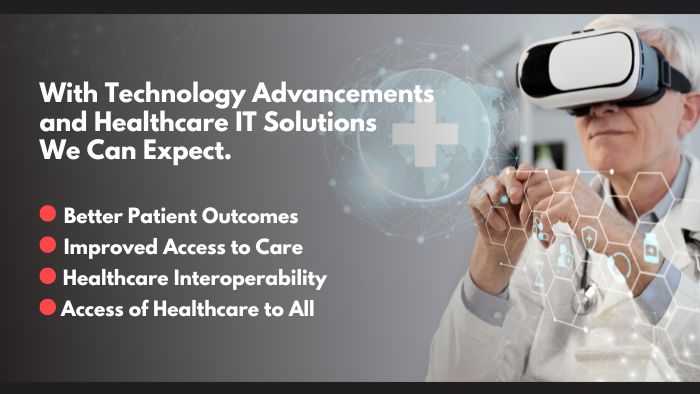
In essence, it can provide more accurate results than traditional monitoring methods. For example, remote systems can take continuous measurements of vital signs, such as heart rate, blood pressure, and oxygen levels. This can help to identify potential health issues much sooner. This will allow healthcare providers to take action before a patient's condition worsens.
Contact us for remote patient monitoring solutions.
5. FinTech Integration
With advances in technology and a growing focus on cost-cutting. Many experts predict that fintech app development and its integration into healthcare will become more widespread in the coming year.
One of the main drivers of this trend is the rising cost of healthcare. With healthcare costs continuing to climb, there is a growing need for innovative solutions to help manage these costs. FinTech companies are well-positioned to provide these solutions. This is because of their expertise in managing financial transactions. And also their ability to leverage data and analytics to identify areas for cost savings.
Another factor that is driving the adoption of FinTech in healthcare is the increasing use of digital health tools. From telemedicine to remote patient monitoring, these tools make it easier for patients to access care from anywhere. FinTech companies can integrate their technologies with these digital health tools to provide patients with a more seamless and cost-effective healthcare experience.
Another major trend in healthcare IT services that are expected to drive the adoption of FinTech in healthcare, is the growing focus on patient-centric care. With patients taking a more active role in their own healthcare. FinTech companies can develop solutions that put patients in control of their health and wellness. For example, patients can use FinTech apps to track their own health data, make appointments, and pay bills.
Contact us for FinTech integration for healthcare solutions.
6. Blockchain Technology in Healthcare
Blockchain technology is a digital ledger system that uses cryptography to secure and validate transactions on a decentralized network. In the healthcare sector, blockchain app development technology can securely store and share patient data, improve supply chain management, and facilitate secure communication between healthcare providers.
- Electronic Health Records (EHRs): Blockchain technology can securely store and share patient data across different healthcare providers. It is for enabling better care coordination and reducing the risk of errors or duplicative tests.
- Supply Chain Management: Blockchain can track the origin, movement, and authenticity of drugs, medical devices, and other products throughout the entire supply chain. Right from manufacturing to distribution to patients. This can help prevent fraud, increase transparency, and improve the overall safety of the healthcare system.
- Clinical Trials: Blockchain can securely store and share data collected during clinical trials. Which can help improve the efficiency and accuracy of the trials and ultimately bring new treatments to market more quickly.
- Secure Communication: Blockchain can facilitate secure communication between healthcare providers and patients. Which can help improve patient engagement and overall care coordination.
- Identity Management: Blockchain-based systems can create and manage digital identities for patients and healthcare providers. Which can help improve security and privacy.
Contact us for Blockchain-based solutions for healthcare.
Conclusion
Overall, it's an exciting time for healthcare IT services and technology solutions. We can look forward to many exciting advancements in 2023 and beyond.
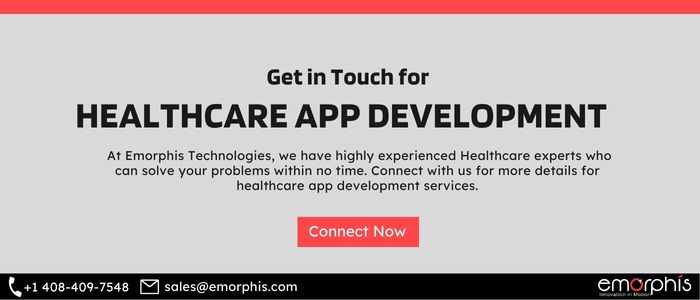
From the use of AI to improve diagnostic accuracy to the continued growth of telemedicine, telehealth app development, and data analytics. Healthcare software and application development with technology will play a critical role in shaping the future of healthcare in terms of technology and advancements. With these enablers of tech, we can expect better patient outcomes and improved access to care for everyone in the future.



